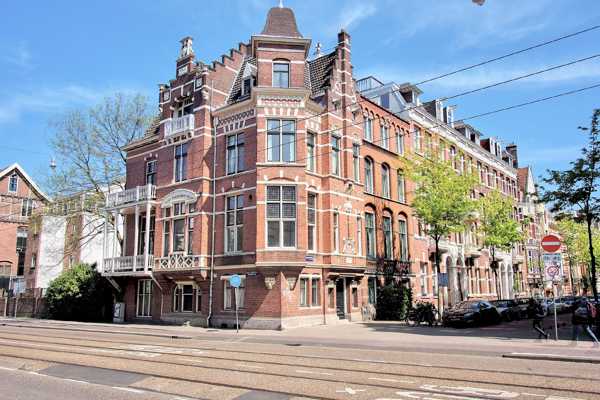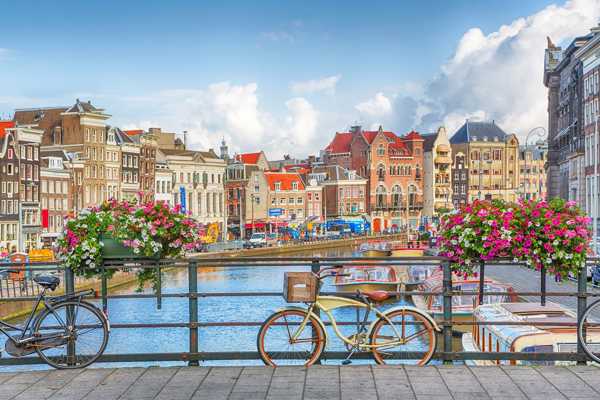Damrak in Amsterdam is a street that connects the main railway station to Dam Square and the Royal Palace. The street was on a rak (reach), a straight section of the Amstel River. Some of the water was reclaimed as building land in the 19th century. A small section remains at the northern end of Damrak. From here, you can hop on a boat for a sightseeing tour of the city’s canals.
Chain stores and souvenir shops flank much of Damrak. There are also other tourist-oriented businesses such as currency exchanges, plus numerous restaurants, creperies, fast-food outlets and cafes. Two 4-star hotels are conveniently located close to Dam Square. Hotels closer to the station are better suited for budget travellers.
Damrak in Amsterdam - one of the highlights of 10 Most Instagrammable Places in Amsterdam and 10 Most Popular Neighbourhoods in Amsterdam (Read all about Amsterdam here)
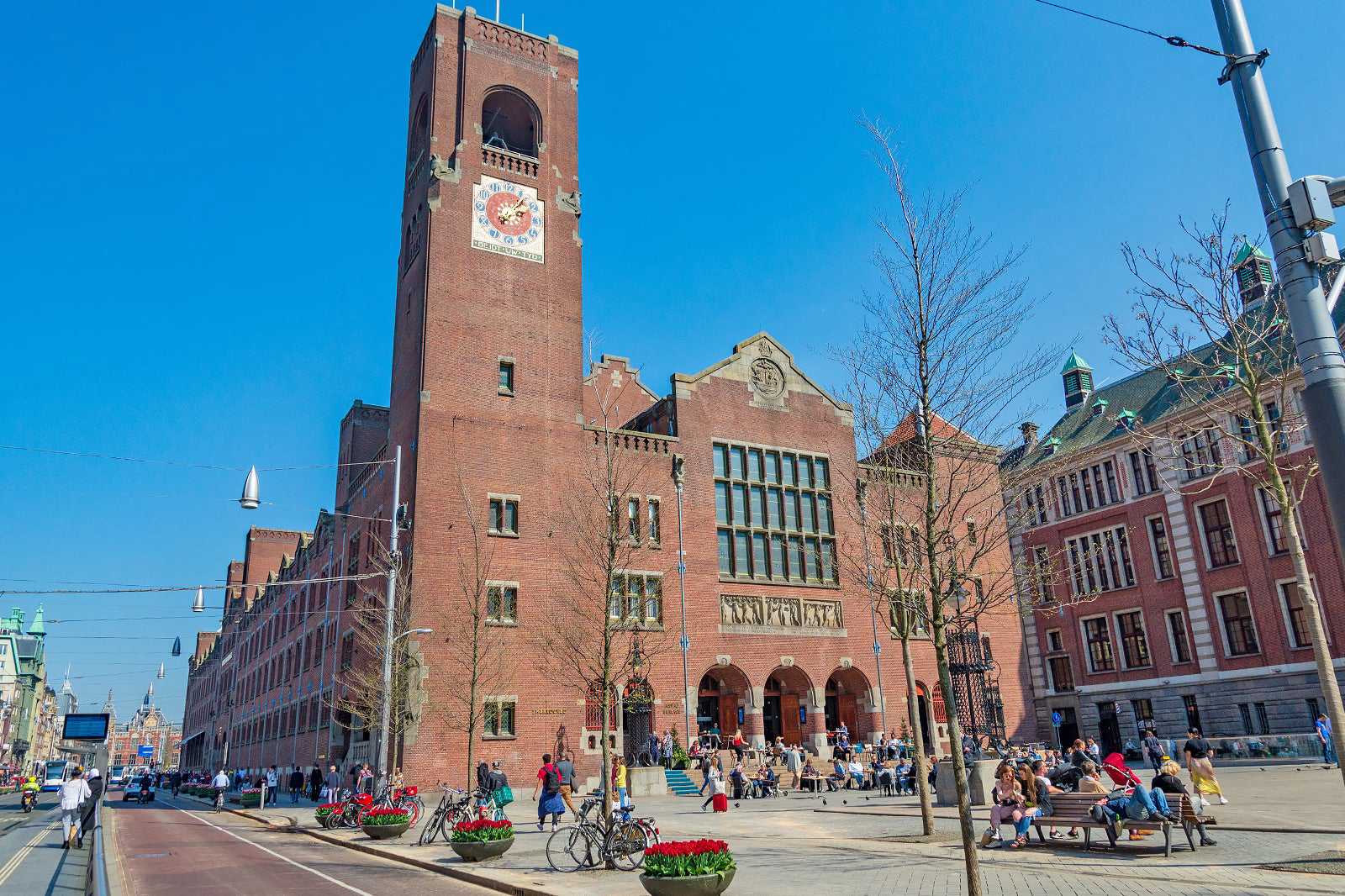
What major landmarks are on Damrak in Amsterdam?
One of the most famous buildings on Damrak is the Beurs van Berlage, which originally housed a commodity exchange. Architect Hendrik Berlage designed it at the end of the 19th century, and it opened in 1903. The redbrick structure has an iron and glass roof, and an imposing clock tower rising above the main entrance.
In 2002, King Willem-Alexander married Máxima Zorreguieta there. The civil ceremony preceded the church wedding at Nieuwe Kerk. Today, the Beurs van Berlage serves as an event and workspace in Amsterdam. It hosts regular art and photography exhibitions, several eateries, and an escape room attraction.
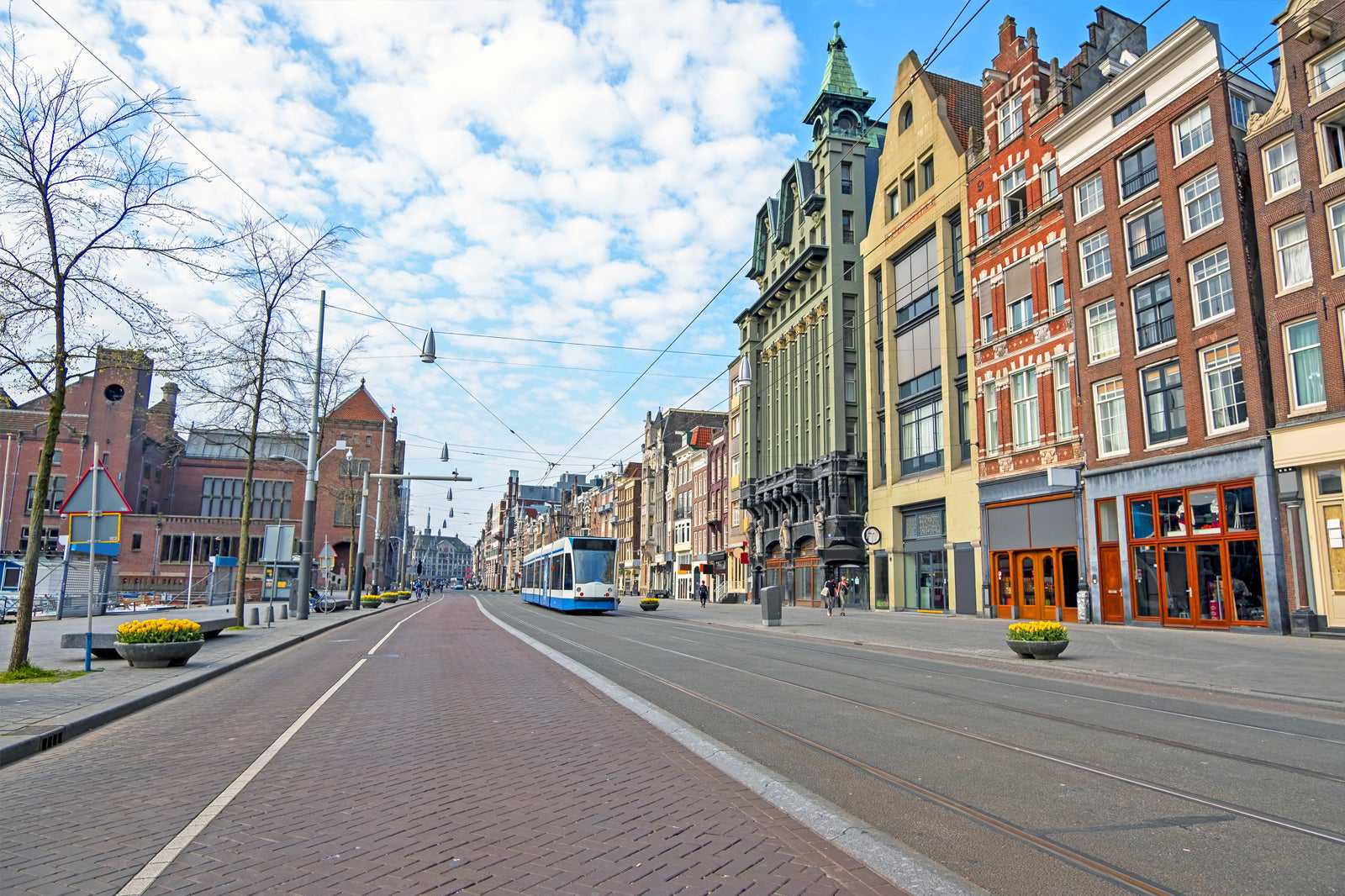
Where to shop and dine on Damrak?
Discount chain Primark in the centre of Damrak is a popular spot to shop for a variety of fine gifts and fashion. The de Bijenkorf Amsterdam department store offers great choices when it comes to the latest fashion trends. Amsterdam Experience is another top choice for souvenir hunting.
If you’re looking to enjoy an authentic Dutch snacking experience, Dutch Pancake Masters specialises in tasty pancakes in a multitude of flavours. Excellent combos include lemon and sugar, raspberry and white chocolate, and banana with chocolate.
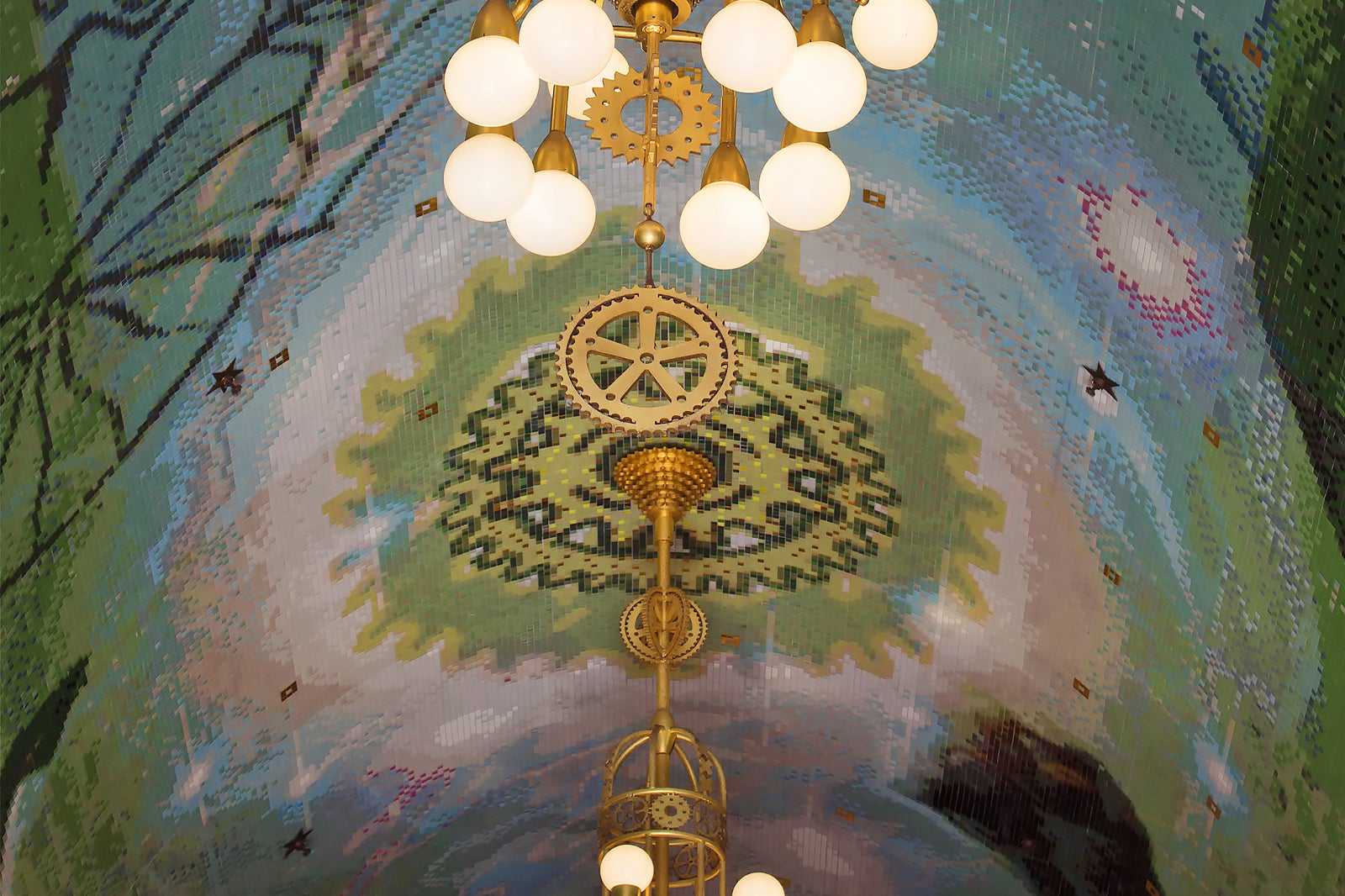
What to see on Damrak in Amsterdam?
About halfway along Damrak is a delightful artwork that enhances Beurspassage. Artists Arno Coenen and Iris Roskam created a lavish mosaic panel to adorn the existing barrel-vaulted ceiling. In hues of emerald green, it creates the illusion of an underwater tunnel complete with fish and air bubbles. It tells the story of the importance of water and pays tribute to the canals that have shaped the lives of Amsterdam's residents.
The work, called Amsterdam Oersoep, also features Art Deco-inspired mirrored walls and a terrazzo stone floor. As a nod to the locals' favourite mode of transport, there are chandeliers made of parts from recycled bicycles. Look closely and you’ll see spokes, cogs, lights and wheels.
You might be tempted to scurry along Damrak in search of somewhere more charming, but we highly encourage spending some time to appreciate the street’s architectural highlights.
The Utrecht lettering on a gable at 26-27 Damrak is a clue that this was once the home of the de Utrecht Insurance Company. The building originally served as a warehouse. 28-30 Damrak housed the company offices. Figures representing The Vigilance, The Vicissitude of the Time, Wisdom Taming Evil, Thrift and Protective Love embellish an otherwise uninspiring façade of polished granite.
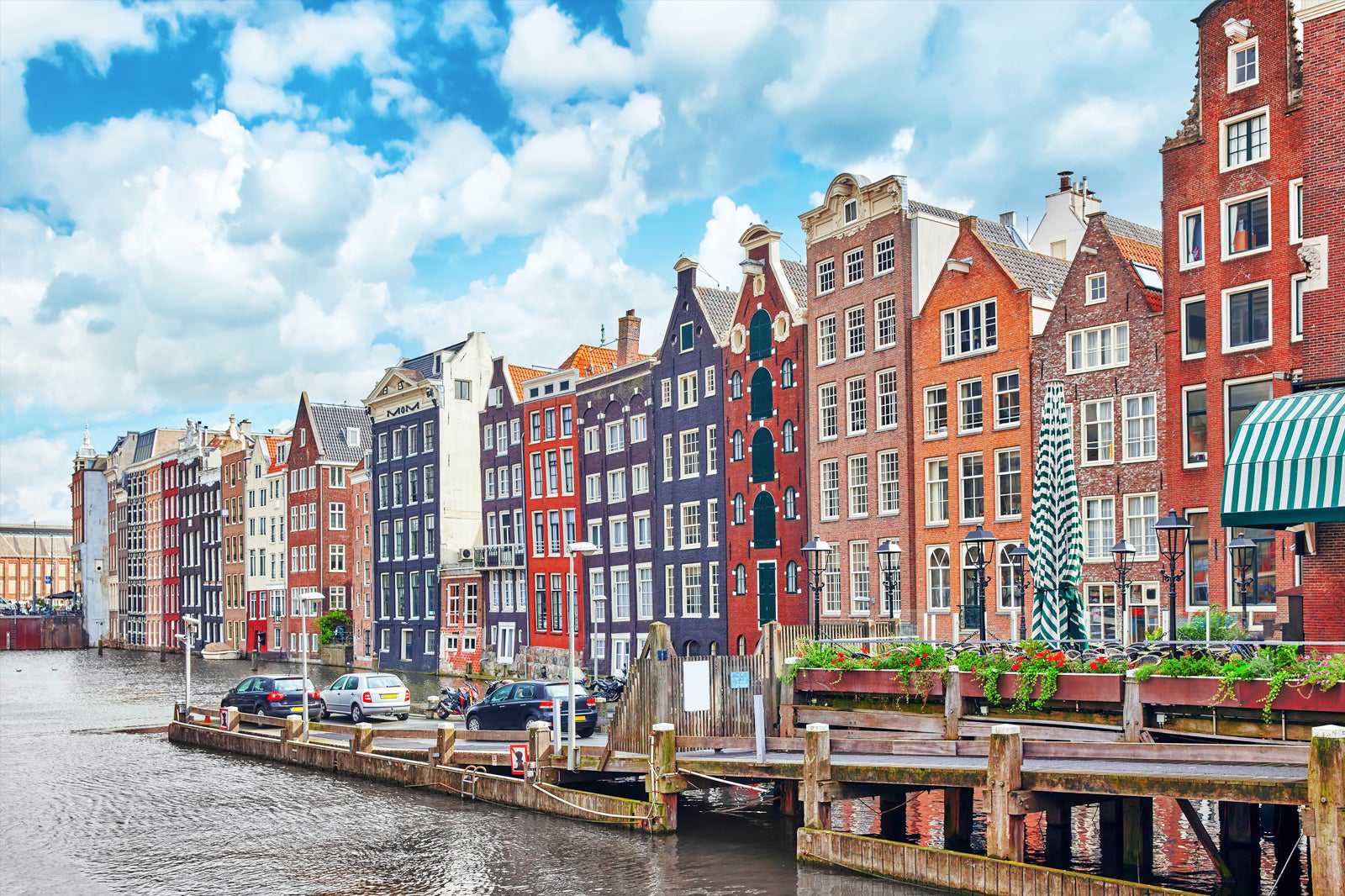
Good to know about Damrak in Amsterdam
Damrak is very easy to get to, thanks to Amsterdam's efficient public transport. Mainline train services arrive at Amsterdam Centraal from all over Europe. The station also connects to Amsterdam’s Schipol Airport and other major Dutch towns and cities.
Within the city, the GVB tram lines 4 and 14 run along Damrak. The north-south line of the Amsterdam subway, line 52, opened in 2018. It follows the route of Damrak, with stations Rokin and Centraal Station at each end.
Damrak in Amsterdam
Staðsetning: Damrak, Amsterdam













